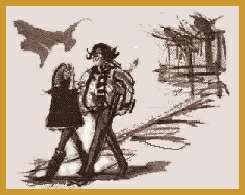11.3b Grassroots campaigns
Policy can be influenced by interest groups that marshal their constituents and appeal to the public for supports. Thus their members could be persuaded to influence their representatives or senators before important votes are cast. The interest groups can use direct mail to contact people for their support of policies as well as for their contributions. These groups can also use the radio, the press, films, signs or word of mouth to influence members. For example, the National Association of Manufacturers (NAM) sends out separate periodicals to educators, leaders of womenís clubs, farm leaders and clergymen. They also attempt to mould public opinion by organizing a speaker-training program, or meeting with leaders of other groups like farmers and veterans. The chamber of commerce, trade associations and individual corporations supplement the efforts of the NAM.
Sometimes interest groups openly endorse candidates and actively
work for their election. Thus the Congress of Industrial organization
(CIO) officially supported Roosevelt in 1944. Similarly the American
Federation of Labor and the CIO backed Humphrey in 1968. The candidates
backed by interest groups may be provided with campaign workers
and financial support.
11.3c Political Action Committees (PACs)
Money is raised and given to candidates by Political Action Committees that may be either independent or associated with other interest groups like labor or trade union. In 1971 legal restrictions were placed on campaign finances. This made Political Action Committees grow in number.
The Political Action Committees that are very influential are generally associated with large interest groups like the National Education Association (NEA). They have a practical approach and generally support incumbent candidates. Of course this may also mean that newcomers get left out of the political fray.

"Iím so proud of you imagine having your hair being defended
by the American Civil Liberties Union!"
Exhibit 11.3
Litigation
|